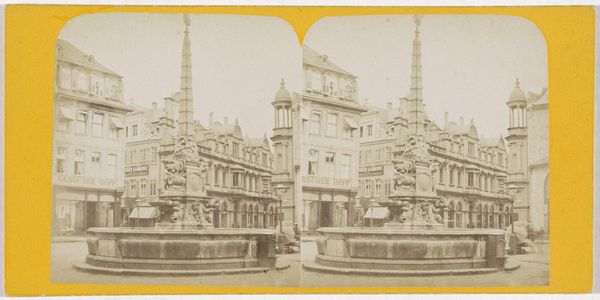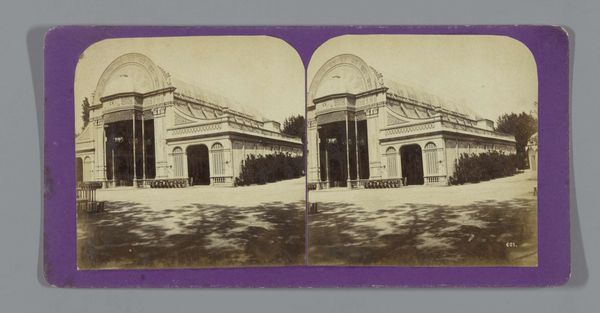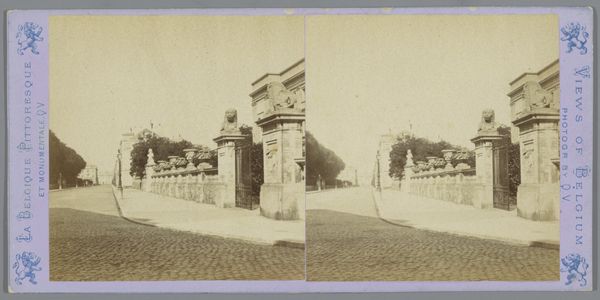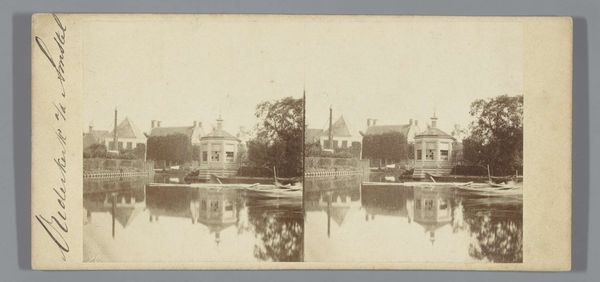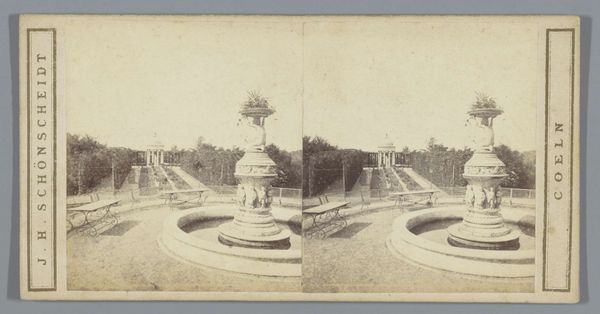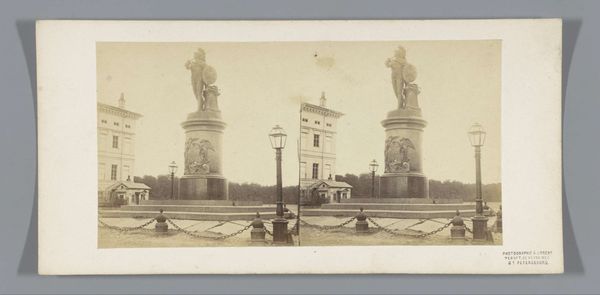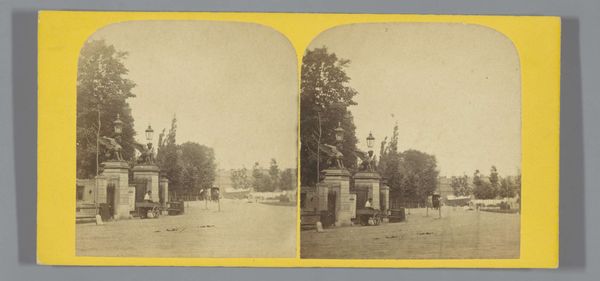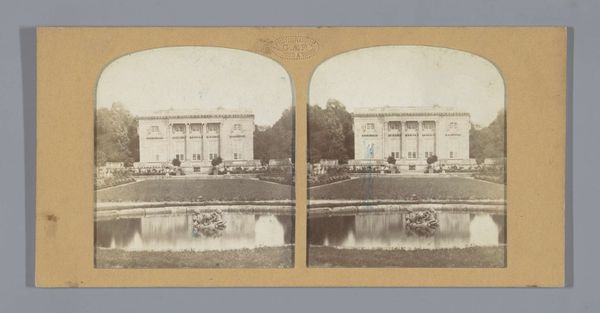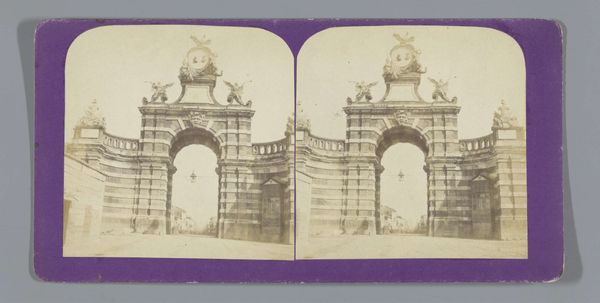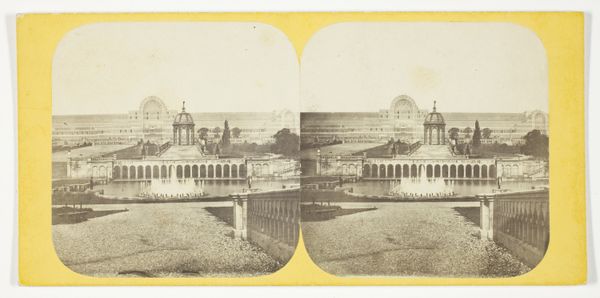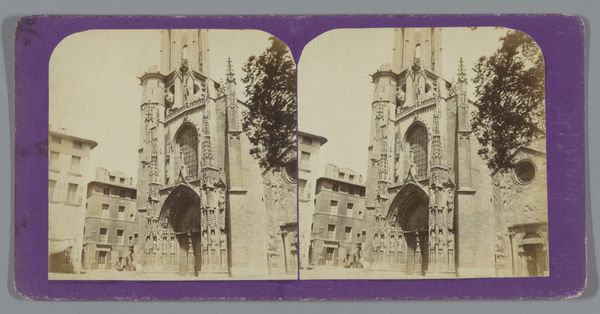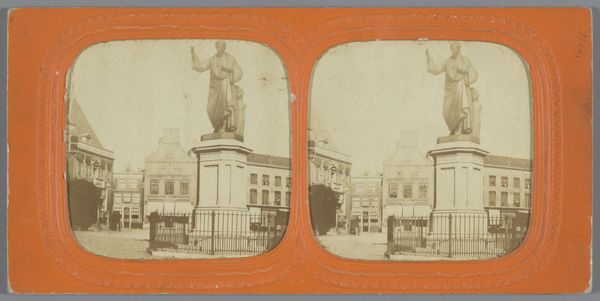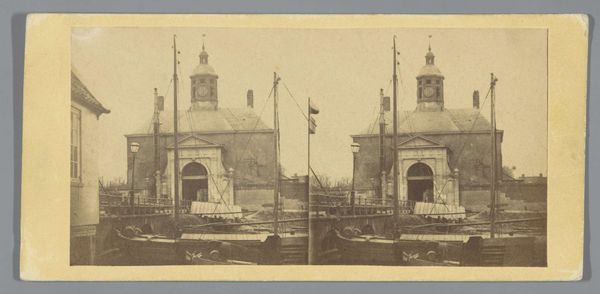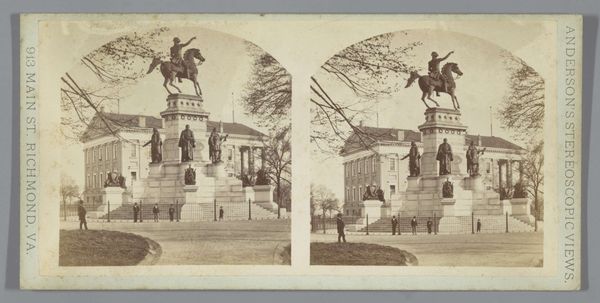
print, photography, architecture
# print
#
landscape
#
photography
#
cityscape
#
architecture
#
realism
Dimensions: height 85 mm, width 170 mm
Copyright: Rijks Museum: Open Domain
Editor: This is a fascinating stereograph! "Gezicht op het Place des Prêcheurs te Aix-en-Provence," taken sometime between 1862 and 1876 by Jean Andrieu. It’s a photograph printed on card stock and designed to be viewed with a stereoscope to give a 3D effect. I’m immediately drawn to the monumentality of the architecture, dominating the square. What can you tell me about its historical context and purpose? Curator: Well, the fact that this image was captured in a stereograph format already tells us a lot. Stereographs were incredibly popular during this period, serving as a form of mass media entertainment and education. Consider that people had a craving for experiencing different parts of the world. The creation and circulation of the image allowed for democratization of travel. Now, looking at the architecture, what message do you think its imposing form conveyed? Editor: I suppose it presents the power and authority of the city of Aix-en-Provence, even grandeur, to viewers at the time. Was this kind of civic architecture common, and what role did it play socially? Curator: Precisely! Civic architecture served as a powerful tool for reinforcing social hierarchies and instilling a sense of collective identity and pride. Images like these help to propagate narratives about progress and national identity and, also, French dominance at the time. What does it tell us that even small towns, towns not at the capital, also sought monuments of their own. Who was the intended audience? What stories were they expected to carry back with them, when viewing these scenes? Editor: It’s fascinating how a seemingly simple photograph can reveal so much about the values and ambitions of the time. It certainly adds a layer of complexity to what I initially perceived. Curator: Exactly. Art often served as propaganda, not for malign reasons, but to carry value-added narratives of progress, sophistication, order and the like, to broader populations, through diverse media. That's part of the complex, interesting world we enter when analyzing art through the lens of cultural and institutional history.
Comments
No comments
Be the first to comment and join the conversation on the ultimate creative platform.
